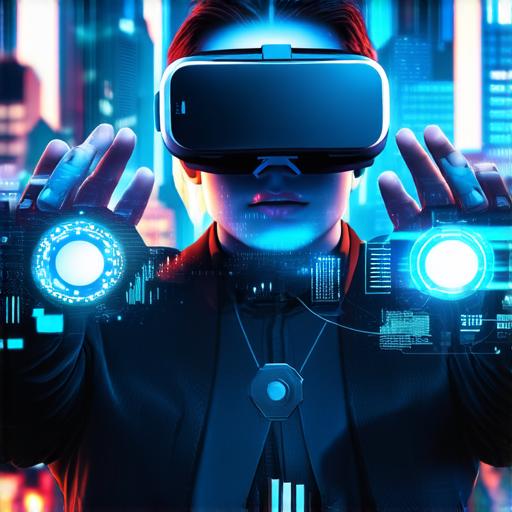
How does virtual reality provide assistance?
Virtual reality (VR) technology is a rapidly growing field that has already transformed the way we experience and interact with the world around us. VR creates immersive and interactive environments that are highly realistic, allowing users to engage in simulations that were previously impossible or limited by traditional methods.
This technology offers valuable tools for training, therapy, rehabilitation, education, and entertainment that have changed the lives of many people.
One of the main benefits of VR is its ability to create safe and controlled environments for professionals to practice their skills. For example, medical students can practice surgeries and procedures without risking harm to patients. Similarly, pilots can hone their skills in flight simulators before taking to the skies for real.
The use of VR technology provides a realistic simulation that prepares them for the challenges they may face in the field, thereby improving their chances of success.
Moreover, VR can be used as a tool for therapy and rehabilitation, helping people overcome various conditions such as PTSD, anxiety disorders, and phobias. Exposure therapy is one of the most common applications of VR technology, which takes patients through virtual environments that mimic their triggers.
For instance, patients with mobility or balance issues can use VR to practice physical exercises in a controlled environment.
In addition, VR has the potential to improve accessibility for people with disabilities by providing immersive experiences that are difficult or impossible to replicate in real life. Visually impaired individuals can use audio cues to navigate virtual environments while those with hearing loss can benefit from closed captions and sign language support.
Furthermore, VR technology provides a way for people with limited mobility to experience activities and environments that may otherwise be inaccessible to them.
Virtual reality has the potential to revolutionize assistance and improve accessibility in numerous industries. The opportunities for innovation and improvement are too great to ignore, and as VR continues to evolve and become more accessible, we can expect to see even more exciting applications emerge that will change the way we live, work, and play.
One potential area where VR could have a significant impact is in education. Virtual reality technology can provide students with immersive learning experiences that are difficult or impossible to replicate in real life. For example, history students can explore ancient civilizations as if they were there, while science students can explore complex concepts through interactive simulations.

In addition, VR can be used to enhance language learning by creating virtual scenarios where learners can practice conversing with native speakers.
Another area where VR could have a major impact is in the entertainment industry. Virtual reality games and movies can provide players and viewers with truly immersive experiences that blur the line between reality and fantasy. Imagine being able to enter a virtual world where you can interact with characters from your favorite stories or participate in epic battles that were previously impossible on traditional gaming platforms.
VR can also be used for creating more realistic and interactive advertisements, product demonstrations, and training simulations.
However, as with any new technology, there are also potential risks associated with VR. Some people may experience motion sickness or discomfort when using VR headsets for extended periods of time. In addition, there are concerns about the impact of VR on social interactions and mental health, particularly in children who may become isolated from real-life experiences.
It’s important to address these risks and ensure that VR technology is used in a responsible and ethical manner.
In conclusion, virtual reality technology has the potential to revolutionize assistance and improve accessibility in numerous industries. While there are certainly challenges associated with this technology, the opportunities for innovation and improvement are too great to ignore. As VR continues to evolve and become more accessible, we can expect to see even more exciting applications emerge that will change the way we live, work, and play.


